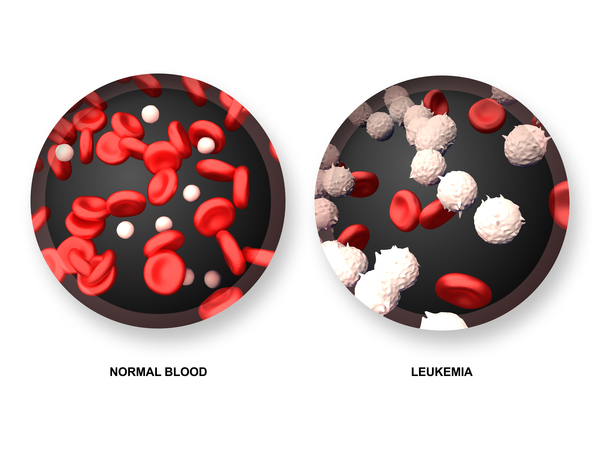Chronic Myelocytic Leukemia (CML) is a form of cancer that affects the bone marrow and blood, originating from abnormal growth of white blood cells. This type of leukemia typically progresses slowly and can remain undetected for years before symptoms appear. Understanding the causes, symptoms, diagnosis, treatment options, and long-term prognosis of CML is crucial for patients and healthcare providers alike.

What is Chronic Myelocytic Leukemia?
Chronic Myelocytic Leukemia is a type of leukemia that specifically targets the myeloid cells in the bone marrow. These cells are responsible for producing various types of blood cells, including red blood cells, platelets, and white blood cells. In CML, the bone marrow produces an excessive amount of abnormal white blood cells, which do not function properly and crowd out normal blood cells. The condition is typically divided into three phases: chronic, accelerated, and blast crisis.
Causes of Chronic Myelocytic Leukemia
The primary cause of CML is a genetic mutation called the Philadelphia chromosome. This mutation occurs when parts of chromosomes 9 and 22 swap places, resulting in the creation of an abnormal gene known as BCR-ABL. This gene produces a protein that triggers the uncontrolled production of abnormal white blood cells. While the exact cause of this genetic mutation remains unclear, several factors can increase the risk of developing CML, including:
- Exposure to Radiation: High levels of radiation, such as those experienced during radiation therapy for cancer, can increase the risk of CML.
- Chemical Exposure: Long-term exposure to certain chemicals, including benzene, may also elevate the risk of leukemia.
- Genetic Factors: While rare, family history may play a role in the development of CML, especially if there are other cases of leukemia within the family.
Symptoms of Chronic Myelocytic Leukemia
The symptoms of chronic myelocytic leukemia are often subtle in the early stages of the disease. Patients may remain asymptomatic or experience mild symptoms, which can be easily attributed to other illnesses. However, as the disease progresses, symptoms can become more apparent. Common signs of CML include:
- Fatigue and Weakness: As the abnormal white blood cells crowd out healthy cells, patients may experience persistent fatigue and weakness.
- Night Sweats: Excessive sweating, especially at night, is common in CML patients.
- Fever: Unexplained fever is a symptom that may accompany CML.
- Unexplained Weight Loss: Significant weight loss without changes in diet or exercise can be indicative of CML.
- Pain or Fullness Below the Ribs: CML can cause the spleen or liver to enlarge, leading to pain or a feeling of fullness.
- Anemia Symptoms: Reduced red blood cell count can result in symptoms such as paleness and shortness of breath.
Stages of Chronic Myelocytic Leukemia
CML progresses through three distinct stages, each of which is associated with different levels of severity and treatment strategies.
- Chronic Phase:
The chronic phase is the earliest and most stable stage of CML. During this phase, patients may experience mild symptoms, and the disease can often be controlled with medications like tyrosine kinase inhibitors (TKIs). The chronic phase may last for several years, and many patients remain in this phase for a long time with appropriate treatment. - Accelerated Phase:
In the accelerated phase, the disease begins to progress more rapidly. White blood cell counts may rise, and the patient’s symptoms may become more severe. Treatment becomes more aggressive at this stage, and the goal is to transition the patient back to a more stable phase. - Blast Crisis:
The blast crisis is the final and most dangerous stage of CML. It is characterized by a sudden and dramatic increase in immature white blood cells (blasts). This phase is difficult to treat and may resemble acute leukemia, requiring urgent intervention.
Diagnosing Chronic Myelocytic Leukemia
The diagnosis of CML is based on a combination of clinical symptoms, laboratory tests, and imaging studies. The following diagnostic methods are commonly used:
- Blood Tests: A complete blood count (CBC) is used to check for abnormal levels of white blood cells, red blood cells, and platelets. An elevated white blood cell count can be a strong indicator of CML.
- Bone Marrow Biopsy: A sample of bone marrow may be collected to examine the number of white blood cells and assess their maturity. This test can help confirm the presence of the Philadelphia chromosome.
- Genetic Testing: The presence of the BCR-ABL gene, identified through a PCR (Polymerase Chain Reaction) test or FISH (Fluorescence In Situ Hybridization), is the definitive marker for CML diagnosis.
Treatment Options for Chronic Myelocytic Leukemia
Treatment for CML has evolved significantly over the years. Thanks to advancements in targeted therapies, patients now have a much better prognosis. The main goals of treatment are to reduce the number of abnormal white blood cells and to manage symptoms effectively.
Tyrosine Kinase Inhibitors (TKIs)
TKIs are the first-line treatment for CML and have revolutionized the management of the disease. These drugs target the BCR-ABL protein and inhibit its activity, which helps control the production of abnormal white blood cells. Some common TKIs used to treat CML include:
- Imatinib (Gleevec)
- Dasatinib (Sprycel)
- Nilotinib (Tasigna)
These medications are typically taken daily in pill form and are effective at maintaining remission in the chronic phase of CML.
Stem Cell Transplantation
In cases where TKIs are ineffective or the disease progresses to the accelerated or blast crisis phase, stem cell transplantation (also known as bone marrow transplantation) may be considered. This procedure involves replacing the patient’s diseased bone marrow with healthy stem cells from a matched donor. Stem cell transplantation is a high-risk procedure but can offer a potential cure for some patients.
Chemotherapy and Radiation Therapy
While chemotherapy and radiation therapy are not the first-line treatments for CML, they may be used in certain situations, particularly during the accelerated or blast crisis phases. These treatments aim to reduce the number of abnormal cells and alleviate symptoms.
Targeted Therapies and Clinical Trials
Researchers continue to explore new drugs and treatments for CML, including combination therapies and novel agents that target different aspects of the BCR-ABL protein. Patients may also be eligible for clinical trials that investigate experimental therapies.
Prognosis of Chronic Myelocytic Leukemia
The prognosis for CML has greatly improved with the advent of TKIs. Many patients can live normal or near-normal lives with ongoing treatment, especially if diagnosed in the chronic phase. However, the prognosis depends on several factors, including the phase at diagnosis, response to treatment, and overall health.
In the chronic phase, patients who respond well to treatment can live for decades with minimal complications. In contrast, the prognosis for patients who progress to the accelerated or blast crisis phases is more guarded. Early diagnosis and prompt treatment are key to improving long-term outcomes.

